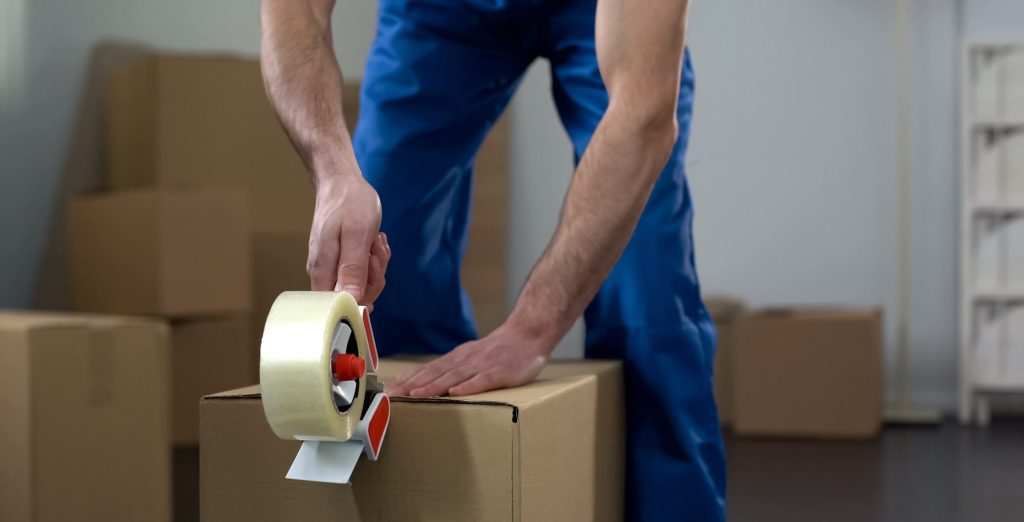Moving house can often feel like an overwhelming task, fraught with logistical challenges and emotional upheavals. One key aspect that can significantly ease this process is decluttering.
Sorting through and reducing one’s possessions not only simplifies the physical act of moving but also provides a much-needed emotional release.
By decluttering, you not only reduce the volume of items to pack, transport, and unpack but also potentially lower your moving costs.
Moreover, it’s an opportunity to start anew in your new home, bringing with it a sense of renewal and a chance to create a more organised and peaceful living space.
Decluttering before a move is more than just a practical step; it’s a transformative process. It’s about deciding what truly matters and what can be let go.
This process is about physical belongings letting go of past habits and starting afresh.
The benefits extend beyond the immediate; they set the stage for a more streamlined and less cluttered lifestyle in your new home. It’s an invitation to reassess your possessions and decide what adds value to your life.
Understanding the Importance of Decluttering
Decluttering before a move is crucial, yet it’s often overlooked or left until the last minute. The importance of this step cannot be overstated. It’s not just about reducing the number of boxes; it’s about simplifying your life.
When you declutter, you’re not only making your move easier but also giving yourself a mental refresh.
The process can be cathartic, helping you to let go of items that no longer serve a purpose in your life. It’s an opportunity to reflect on your possessions and evaluate what’s genuinely important.
This mindful approach to decluttering can lead to a more organised and less chaotic moving experience.
The psychological impact of decluttering is profound. It’s not just about creating more space in your physical environment; it’s about clearing mental clutter as well.
Letting go of unnecessary items can bring a sense of clarity and focus, reducing stress and anxiety.
It allows you to concentrate on the essentials, both in terms of belongings and in life. This minimalist approach can lead to a lighter, more liberated feeling, both during the move and as you settle into your new home.
By decluttering, you’re not just preparing for a move; you’re setting the stage for a more intentional and fulfilling lifestyle.
Setting Decluttering Goals
When embarking on the decluttering journey, it’s vital to set clear, achievable goals. Start by defining what you hope to accomplish. Are you aiming to reduce your belongings by a certain percentage?
Do you want to ensure that everything you take to your new home sparks joy or serves a practical purpose? Setting these targets gives you a clear direction and helps maintain focus throughout the process.
It’s also helpful to create a timeline for your decluttering tasks. Break down the process into manageable steps, allocating specific times for different areas of your home.
This approach helps prevent the task from becoming overwhelming and ensures steady progress.
Goal setting is not just about the result; it’s about creating a roadmap for getting there. Consider your moving date and work backwards, establishing milestones along the way.
This might mean deciding to complete the kitchen one week, the living room the next, and so on.
By setting these incremental goals, you’re more likely to stay on track and feel a sense of accomplishment as you tick each area off your list. Remember, decluttering is not a race.
It’s important to allow yourself enough time to sort through your belongings thoughtfully and make decisions that you won’t regret later.
A rushed decluttering process can lead to hasty decisions and potential regrets.
Sorting and Categorising Items
The process of sorting and categorising items is at the heart of decluttering. Begin by dividing your belongings into distinct categories: those you’ll keep, items to sell, pieces to donate, things to recycle, and objects to discard.
This methodical approach helps in making objective decisions about each item. When sorting, ask yourself if the item has been used recently, if it holds significant emotional value, or if it will be useful in your new home.
This can be a challenging process, requiring honesty and sometimes a bit of ruthlessness.
Remember, the goal is to lighten your load, both physically and emotionally.
As you categorise your belongings, it’s crucial to be decisive. It’s easy to fall into the trap of keeping things ‘just in case’ or out of sentiment. However, this often leads to unnecessary clutter.
When evaluating each item, consider its current utility and relevance to your life.
This process is not about discarding memories but about making room for new experiences. It’s also an opportunity to pass on items that could be useful to others.
By donating or selling your unwanted belongings, you’re not only decluttering your space but also potentially helping others and the environment.
Tackling One Area at a Time
Decluttering an entire house can seem daunting. The key is to break it down and tackle one area at a time. Start with a small, manageable space – perhaps a single drawer or cupboard.
This approach helps build momentum and provides a sense of achievement early in the process.
Gradually move to larger areas, maintaining focus and not allowing yourself to be overwhelmed. Each space in your home will have its unique challenges and require different strategies.
For instance, decluttering a wardrobe involves different criteria than sorting through kitchen utensils. Keep this in mind and adapt your approach accordingly.
When tackling each area, maintain a systematic approach. Start by removing everything from the space, then clean it thoroughly. This not only gives you a blank canvas to work with but also allows you to see the space afresh.
As you sort through items, be mindful of how each piece fits into your overall decluttering goals.
Ask yourself if each item deserves a place in your new home. Remember, the aim is to surround yourself with things that are useful or bring you joy.
By the end of this process, each area of your home should not only be decluttered but also organised in a way that makes packing simpler and more efficient.
Remember, you don’t have to do this alone, friends, family and maybe even your kids can help.
Selling, Donating, and Disposing of Unwanted Items
Once you’ve sorted through your belongings, you’ll likely have a collection of items to sell, donate, or dispose of. Selling items can be done through various platforms such as online marketplaces, local community boards, or car boot sales.
Be realistic about the value of your items and set fair prices. This not only ensures a quicker sale but also makes the process more rewarding. For items that are not worth selling, consider donating them to local charities, shelters, or community centres.
Many organisations welcome second-hand items, and this can be a great way to give back to the community.
Disposing of items should be your last resort, and when you do, try to do so responsibly. Look for recycling options for items that can’t be sold or donated.
Many local councils offer recycling services for a variety of materials, and there are often specialised facilities for electronic waste or hazardous materials.
Be mindful of the environmental impact of your disposal choices. The goal is to declutter responsibly, ensuring that items that are no longer useful to you don’t end up causing harm to the environment.
Packing What Remains
After decluttering, you’ll be left with only the items you’ve chosen to keep. This is the time to start packing them for the move. Invest in good quality packing materials to protect your belongings. Label boxes clearly, categorising them by room or item type.
This not only makes unpacking easier but also helps movers understand where to place boxes in your new home.
When packing, consider the layout of your new home and pack items in a way that will ease their integration into the new space. For instance, keep all kitchen items together, and label the box accordingly.
Packing can also be an opportunity to further declutter. As you pack, you might come across items that you missed during your initial decluttering or realise that certain items are not as necessary as you thought.
Be open to making these last-minute decisions. Remember, the goal is to move into your new home with only the things that add value to your life.
By being thoughtful about what you pack, you’re not only making the moving process easier but also setting yourself up for a more organised start in your new home.
Conclusion
Decluttering before a move is more than just a practical task; it’s a journey towards a more intentional way of living.
By carefully selecting what to bring into your new home, you’re not just reducing the physical burden of moving but also setting the stage for a more organised, peaceful, and fulfilling life.
Remember, decluttering is not a one-time event but a continuous process that encourages mindfulness and simplicity.
As you settle into your new home, carry forward the lessons learned from decluttering. Embrace the freedom and clarity that come with having less and focus on the things that truly matter.
This move is not just a change of address; it’s an opportunity to redefine your living space and lifestyle.
By starting this new chapter with a decluttered and organised home, you’re paving the way for a life filled with more meaning, less stress, and greater joy.
Remember, a decluttered space leads to a decluttered mind, and this new beginning is the perfect time to embrace that philosophy fully.








